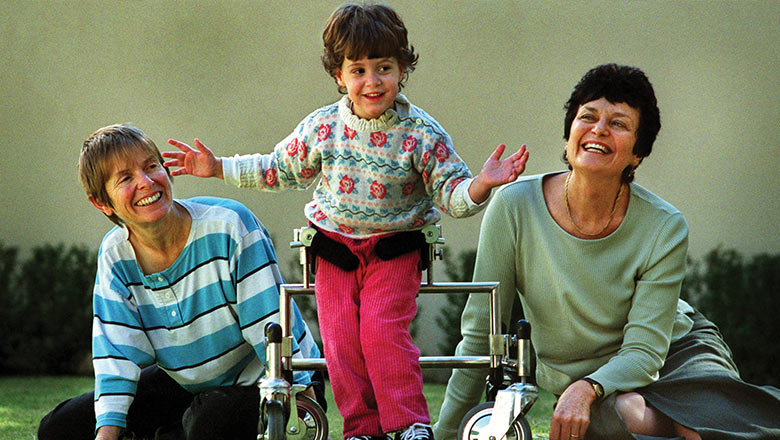Search
Research
Functional outcomes in children and adolescents with neurodisability accessing music therapy: A scoping reviewTo determine the evidence for functional outcomes experienced by a population with paediatric neurodisability (such as acquired brain injury, cerebral palsy, spinal cord injury, and other neurological disorders), who access music therapy through neurorehabilitation services across the rehabilitation spectrum.
Research
The Use of Serious Gaming to Improve Sensorimotor Function and Motivation in People with Cerebral Palsy: A Systematic ReviewThe aim of this systematic review was to review the evidence for serious gaming interventions in improving sensorimotor function in children and adults with cerebral palsy (CP). Seven databases were searched with terms related to serious gaming and CP.
Research
Chronic Pain in Young People with Cerebral Palsy: Activity Limitations and Coping StrategiesTo describe the effect of chronic pain on the activities of children and adolescents with cerebral palsy, to describe coping strategies, and to examine associations between effect of pain on activities, coping strategies, and level of pain.
Research
Application of Inertial Measurement Units and Machine Learning Classification in Cerebral Palsy: Randomized Controlled TrialCerebral palsy (CP) is a physical disability that affects movement and posture. Approximately 17 million people worldwide and 34,000 people in Australia are living with CP. In clinical and kinematic research, goniometers and inclinometers are the most commonly used clinical tools to measure joint angles and positions in children with CP.
Research
Does somatosensory discrimination therapy alter sensorimotor upper limb function differently compared to motor therapy in children and adolescents with unilateral cerebral palsy: study protocol for a randomized controlled trialBesides motor impairments, up to 90% of the children and adolescents with unilateral cerebral palsy (uCP) present with somatosensory impairments in the upper limb. As somatosensory information is of utmost importance for coordinated movements and motor learning, somatosensory impairments can further compromise the effective use of the impaired upper limb in daily life activities.
Research
Implementation of an Early Communication Intervention for Young Children with Cerebral Palsy Using Single-Subject Research DesignThe implementation of an intervention protocol aimed at increasing vocal complexity in three pre-linguistic children with cerebral palsy (two males, starting age 15 months, and one female, starting age 16 months) was evaluated utilising a repeated ABA case series design. The study progressed until the children were 36 months of age. Weekly probes with trained and untrained items were administered across each of three intervention blocks.
Research
Cerebral palsy: EpidemiologyCerebral palsy (CP) is a lifelong physical disability, resulting from maldevelopment or damage to the developing brain. All children with CP have a disorder of movement and posture, but this is often accompanied by disorders of intellect, sensation, behaviour and epilepsy. Long-standing CP registers and surveillance systems estimate the prevalence of CP as approximately 2 per 1000 live births; however variations are seen over time and in different regions of the world.
Research
Eating and drinking abilities and respiratory and oral health in children and young adults with cerebral palsyTo investigate the potential risk factors of respiratory illness (ethnicity, oral health, and eating and drinking ability) in children and young adults with cerebral palsy.

News & Events
Changing the focus of cerebral palsyCerebral palsy is not only the result of birth trauma and the lack of oxygen supply during delivery.
Research
Kindy Moves: a protocol for establishing the feasibility of an activity-based intervention on goal attainment and motor capacity delivered within an interdisciplinary framework for preschool aged children with cerebral palsyPreschool aged children with cerebral palsy (CP) and like conditions are at risk of performing below their peers in key skill areas of school readiness. Kindy Moves was developed to support school readiness in preschool aged children with CP and like conditions that are dependent on physical assistance and equipment throughout the day. The primary aims are to determine the feasibility of motor-based interventions that are functional and goal directed, adequately dosed and embedded into a play environment with interdisciplinary support to optimise goal-driven outcomes.
